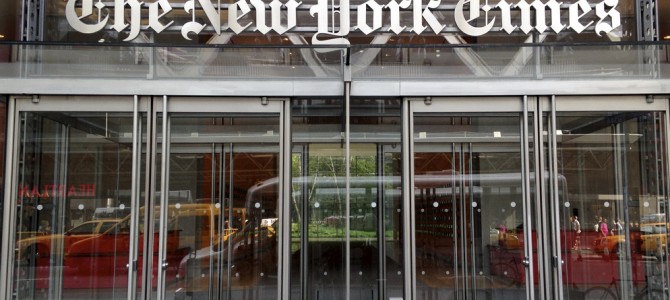
If you’re one of the 10 million Americans whose health insurance plans are being canceled because Obamacare deemed them “substandard,” the editorial board of The New York Times would like you to know that you shouldn’t have wanted your plan to begin with and now you’ll be able to get something much better. Trust them.
Faced with the widespread cancellation of insurance policies nationwide, the Left is struggling to explain not only why the president said—though he knew it to be untrue—that if you like your plan you can keep it, but also why it’s a good thing that millions of Americans are losing the coverage they currently have.
So far, the best the editors at the Times can come up with is that “people forget how terrible many of the soon-to-be-abandoned policies were. Some had deductibles as high as $10,000 or $25,000 and required large co-pays after that, and some didn’t cover hospital care.”
According to this logic, no one should have wanted such plans, regardless of their financial situation or health status. Paternalistic hubris aside, the editors conveniently ignore that many catastrophic plans have deductibles closer to $5,000 and cover routine physician visits and hospital care. Admittedly, they don’t cover maternity care or substance abuse treatment, but why would a young guy without a drug habit want to pay for those things? And why should he have to?
The answer goes right to the heart of Obamacare: young people will subsidize coverage for the elderly and those with preexisting conditions. The Times editors acknowledge that premiums will come down for older, sicker patients and rise for the young and healthy, but then suggest that despite higher rates most people will pay less, “because those with modest incomes will qualify for federal subsidies.”
Here, it’s worth asking what the editors mean by “modest incomes,” because a close look at how the subsidies are calculated casts serious doubt on the claim. The law stipulates how much of a person’s income must go to pay the premium for the second lowest-cost silver plan offered in their area before subsidies kick in. That amount is based on income. For example, someone who earns 250 percent of the Federal Poverty Level (FPL), or $28,725 a year, will pay no more than 8.05 percent of their income, or $193 a month, for the second lowest-cost silver plan on the exchange. Any premium costs beyond that are paid for by a federal subsidy.
Common sense suggests that for someone making less than $29,000 a year, a monthly bill of $193 isn’t easy to swallow—especially if you were paying $60 a month for catastrophic coverage prior to Obamacare. Like most government entitlement programs, it gets worse the more you earn. At 300 percent FPL, or $34,470 a year, you have to pay $273 a month out-of-pocket before any subsidy kicks in.
For many Americans, coverage at this price simply isn’t affordable—especially for young people, for whom wages are stagnant and unemployment is now almost 15 percent. In states like Texas, with a lightly regulated individual insurance market where young people could get catastrophic care for less than $60 a month, the Texas Public Policy Foundation found that 27-year-old Texan men would face an average cost increase of 158 percent for the cheapest catastrophic coverage available on the exchange.
Texas is not unique in this regard, and is actually better off than some states. The Heritage Foundation’s comparison of pre- and post-ACA rates found an increase of more than 252 percent for 27-year-olds in Virginia. All told, Heritage found that ten states will see premiums rise by more than 100 percent for this age group.
If it’s hard to feel bad for young people, consider that most Americans purchasing coverage on the individual market are self-employed. They pay their own taxes and they don’t get the same tax exemption for health care spending that employers do. These people tend to be entrepreneurial and hard working, and the health plans they buy tend to offer actual insurance against an unforeseen illness or accident—in contrast to the benefit-laden, pre-paid health care plans that Obamacare mandates.
These are the last people who should be punished by health care reform because they were the ones who were paying more to begin with. Yet Obamacare is built on their backs. Not only will they pay more, they will lose the plans they had—plans that they might have liked but that have no place in the new Obamacare system and are therefore suddenly “not worth keeping.”
To the Times, the loss of these plans is an “overblown controversy” that has distracted from what the law is really trying to do, which is to ensure that everyone has quality insurance.
That may or may not be a worthy goal, but it strains credulity to argue, at this late hour, that Obamacare will not be costly, or that it will not be disruptive, or that it will not create winners and losers. It already has—and the losers are losing big.
Mr. Davidson is a writer based in Austin, Texas, and a health care policy analyst at the Texas Public Policy Foundation.









